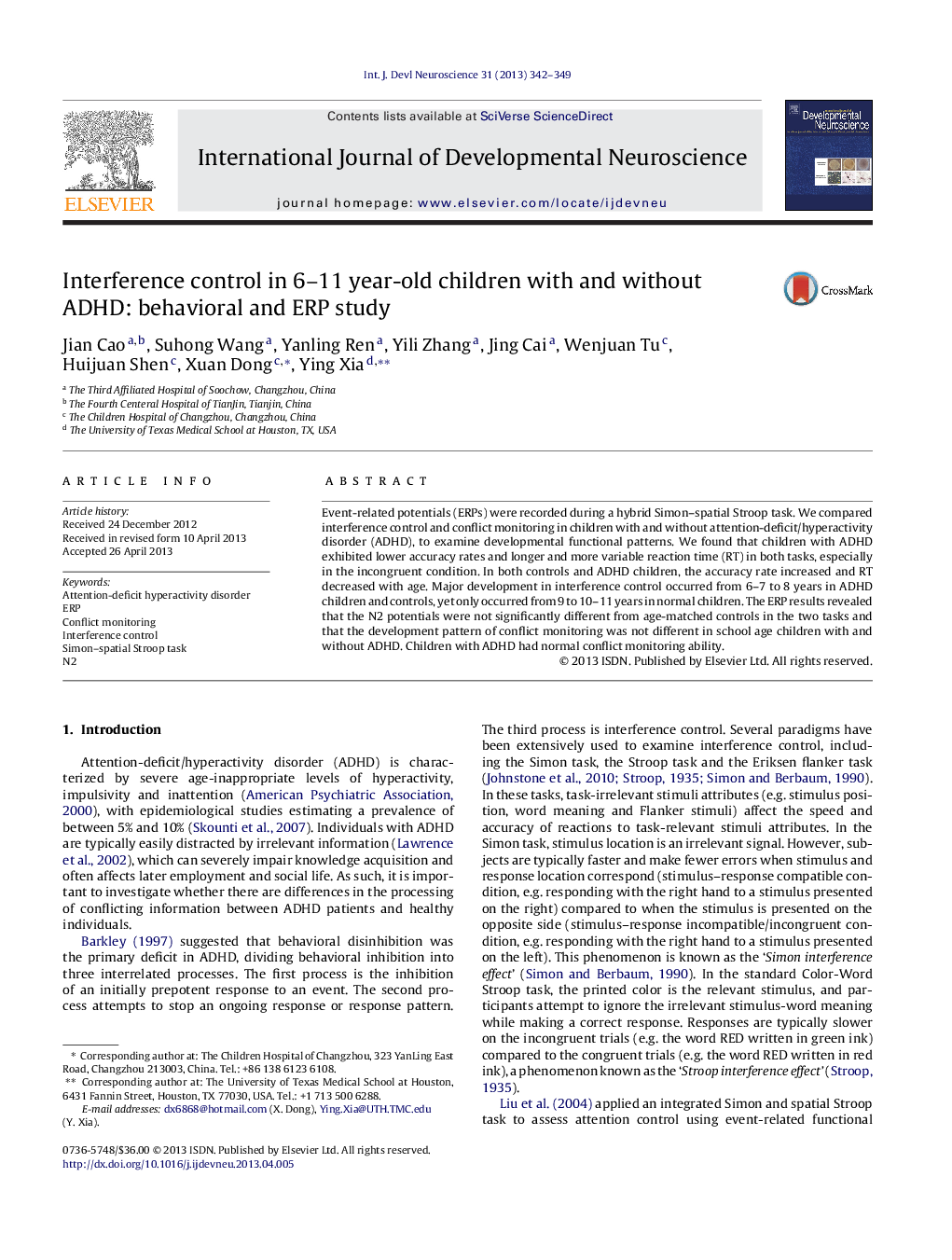| Article ID | Journal | Published Year | Pages | File Type |
|---|---|---|---|---|
| 2785984 | International Journal of Developmental Neuroscience | 2013 | 8 Pages |
•Interference control and conflict monitoring function are broadly examined in ADHD children.•Behavioral data show major changes across ages and between normal and ADHD children.•ERP measurements suggest a normal ability of conflict monitoring in Children with ADHD
Event-related potentials (ERPs) were recorded during a hybrid Simon–spatial Stroop task. We compared interference control and conflict monitoring in children with and without attention-deficit/hyperactivity disorder (ADHD), to examine developmental functional patterns. We found that children with ADHD exhibited lower accuracy rates and longer and more variable reaction time (RT) in both tasks, especially in the incongruent condition. In both controls and ADHD children, the accuracy rate increased and RT decreased with age. Major development in interference control occurred from 6–7 to 8 years in ADHD children and controls, yet only occurred from 9 to 10–11 years in normal children. The ERP results revealed that the N2 potentials were not significantly different from age-matched controls in the two tasks and that the development pattern of conflict monitoring was not different in school age children with and without ADHD. Children with ADHD had normal conflict monitoring ability.
